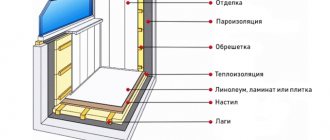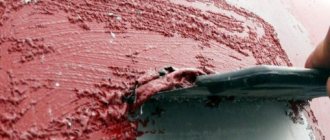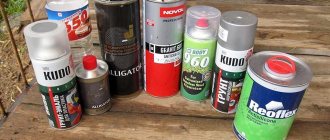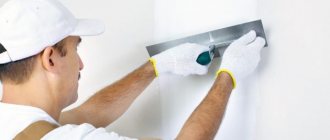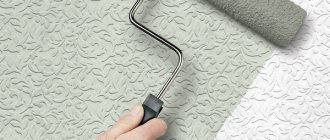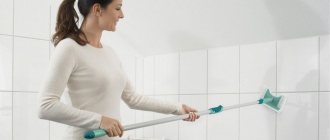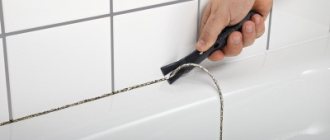in order to paint the floor, it is necessary to remove the old varnish coating. Acrylic varnish is a special type of paint coating, which basically contains water, acrylic resins and special substances that give the material an aesthetic appearance.
One of the main advantages that make this varnish popular is its complete absence of odor and quick drying.
Therefore, the use of the material greatly simplifies the painting process and eliminates the need for prolonged ventilation of the room.
In addition, the varnish is also environmentally friendly, as it does not contain toxic substances.
Facilities
There are three main ways to remove varnish.
- Using chemical compounds
- Mechanical impact
- Heating to high temperature
Each of them has its pros and cons. This is not to say that there is a universal solution. For each specific case, a different method of cleaning the surface is selected. The choice depends on the composition of the varnish with which the wooden surface was coated and on the thickness of the layer. The type of wood base is also important, for example, different methods are used to treat wood floors and wood chairs.
Chemical compositions
Another name for removing varnish using chemicals is stripping. This is the most common method for processing small areas of wood. Used for furniture, figurines and other products where the varnish layer is quite thin, and its removal must be delicate.
There are three types of chemicals designed to remove old varnish from wood.
- Liquid. Used if a thin layer of varnish is applied to the product. Liquid is a substance that quickly evaporates from the surface. thus, it can only be absorbed into the very top layer of varnish, but does not penetrate deeper. If you use liquid products on furniture that has more than three coats of varnish on it, it may not work.
- Spray. The main advantage is ease of use. The product is sold in a can; you simply spray it onto the surface you want to clean. In this case, the substance is converted into foam, which is actively absorbed into the varnished surface and corrodes it. On the other hand, a spray can only remove a few thin layers, so it is only effective on delicate items.
- Gel or paste. They are used when it is necessary to treat a large area, for example, a parquet floor. Suitable for removing thick layers of varnish and can even be used for paint.
- Powder. The properties of the powder composition are identical to gels. The fact is that before use, the powder must be diluted with water to a paste. And in bulk form, the product is made only for ease of storage and transportation. Thus, if you have large-scale work ahead that requires a lot of chemicals, powder will be the best solution.
Thanks to the gel or paste obtained from the powder, you can remove ten layers of varnish in one application.
Mechanically
This option involves scraping, that is, you will need to literally tear off the varnish layer. Several types of devices are used for this.
- Cycle. It is a pointed metal plate with a comfortable handle. Thanks to its special structure, it provides a strong impact on the surface. This means work efficiency increases.
- If there is no cycle, ordinary glass will do. However, there are two disadvantages here. Firstly, the glass should be constantly replaced, as it quickly becomes dull. Secondly, you can only work with gloves.
- Sandpaper. Used when you need to remove a thin layer of varnish from a small product. A very small thing can be processed by hand. If it is a piece of furniture, such as an old chest of drawers or a cabinet, then you can use a sander.
Any of the selected mechanical processing methods is very dirty and dusty. This is especially noticeable if you use a sander. But there are many more advantages here. Firstly, you won’t have to breathe in chemicals, the odor of which can remain on the wood product even longer. Secondly, this method is much better for the tree itself.
How to quickly remove nail polish using a thermal method
This is truly the fastest way to remove polish. But it requires a certain skill and dexterity. The varnished surface heats up to such an extent that it begins to swell and slowly fall off. At this point, it must be pryed off with a spatula and removed.
You can use a burner or a professional hair dryer to heat the varnish. The burner will allow you to melt the varnish faster, but its use is considered dangerous, because the work is carried out with an open fire. If overheated, a wooden surface may well catch fire.
Using a hair dryer is preferable. But such equipment costs much more than a conventional gas burner. Do not confuse a construction hair dryer with a household hair dryer. A household hair dryer will never be able to heat up to such a temperature as to melt the varnish. A hair dryer heats the air to such an extent that the varnish cracks and comes off the wood quite quickly.
Features of removal from various surfaces
Carpet cleaning. If a stain forms, you must act immediately. If the acrylic has not yet dried, you can simply rinse it with water and wipe it off with a rag. You must act carefully, not allowing the paint to penetrate deep into the pile. Movements should be light and jerky. You should absolutely not rub the stain with force, as this will only make it bigger. You can use a solvent when the paint stain is already old.
You must act carefully, not allowing the paint to penetrate deep into the pile.
Cleaning furniture, glass. To clean them you need to use a razor blade. It is positioned at a slight angle to the surface, the edge of the acrylic clings and the paint is pulled off with slow movements. Using this method, old paint can be easily cleaned.
To clean the glass you need to use a razor blade.
Cleaning clothes. To clean a fresh stain, just blot it with a napkin, then moisten the sponge in solvent and remove the residue, after first turning the clothes inside out.
To clean a fresh stain, just blot it with a napkin, then moisten the sponge in solvent and remove the residue.
Beginning of work
Cleaning paint is a challenging process that requires preparation. Before starting work, you need to inspect the wooden product to determine its suitability.
The next step is to select tools and appropriate protective clothing. The most gentle tools are selected to cause minimal damage to the wood.
To remove paint you will need:
- protective clothing: mask, gloves, goggles;
- soft cloth rags;
- spatulas, sandpaper;
- hair dryer with temperature control;
- flusher;
- electric drill;
- metal brushes;
- angle grinder.
There are many ways to remove paint from a wooden surface:
- Mechanical processing is faster than other methods and can cope with large areas. The method allows you to remove paint along with the top layer of a wooden product.
- Washing with chemical reagents implies destruction of the structure of the dye.
- Thermal method, which involves the use of a special hair dryer.
Before starting work, you should take into account the characteristics of the paint, namely:
- Thickness. If the wooden product is covered with one layer, then instead of removing it, you can try applying a new layer of paint on top of the old one.
- The texture so that the new coating is close in properties to the old one.
- Color. Traces of previous coating should be completely removed to prevent mixing of paints during further coating of the product.
- Age of previous coverage. By the time it is removed, the old coating may be very peeling, which will lead to bumpiness during subsequent painting.
Before removing old paint from wood, you should consider the following factors:
- Ability to work outdoors. It is advisable to clean off paint and varnish substances in a well-ventilated area to avoid dust or toxic fumes from entering the mucous membranes.
- Number of layers to be removed. If you have to remove more than 3 layers, then you should not consider the mechanical method. This will lead to a large waste of materials.
- Ability to move the workpiece. When processing a non-mobile product, there is a risk of harming the objects surrounding it.
- Surface relief. If unevenness is obvious, chemical treatment should be used.
Heat treatment
The essence of this process is to heat the wooden surface, due to which the varnish adheres less firmly to the surface. In other words, the varnish begins to crack, after which it can be pryed off with a tool (a chisel or spatula will do) and slowly removed.
Please pay attention to the following nuances:
- During work, you need to use protective equipment (gloves and goggles), and also ventilate the room. The fact is that when heated, the varnish releases toxic substances, and when the material is mechanically separated, pieces can bounce off of it. Also, do not forget about fire safety.
- If the varnish is heated up, but does not peel off, but becomes charred, you need to change the cleaning method and you cannot do without chemicals.
Required tools:
Gasoline or gas burner. Such devices are quite inexpensive
However, the burner must be used with extreme caution, as work will be carried out with an open flame. Care must be taken when working with the burner
Construction hairdryer. The device is similar to a household hair dryer, but has significantly greater temperature capabilities, heating up to 600 degrees.
Note! A standard household hair dryer is not suitable for removing nail polish. The main advantage of the thermal method is its high speed of operation.
However, we must not forget about the danger of overheating the varnished surface, since in this case it may catch fire.
The main advantage of the thermal method is its high speed. However, we must not forget about the danger of overheating the varnished surface, since in this case it may catch fire.
The work is done with both hands: one holds the hairdryer, which heats the surface, and the second holds a spatula for removing nail polish.
How to remove fresh stains
No special products are required to remove fresh stains. Just dampen a cloth in warm water and wipe. However, there are various textures into which foreign compounds quickly penetrate. But even in this case, you can do without aggressive means. If paint gets on the fabric, you should immediately treat the stain with sunflower oil, rub it with ordinary household oil and soak for 15 minutes in very hot water. After time, the fabric is washed either by machine or by hand.
You can treat the contamination with an organic solvent. Isopropyl alcohol is applied to the stain and left for a couple of minutes. After which, it is washed off. If the paint has already penetrated into the surface, you can use a brush with stiff bristles. A mixture of ammonia and vinegar works well on fresh stains. Ammonia and acid are mixed in equal proportions. Then dip a cotton pad into this solution and rub off the stains with smooth movements.
A mixture of ammonia and vinegar works well on fresh stains.
Varnish removal options
Conventionally, all methods of removing an old layer of paintwork from a surface can be divided into three types:
- Mechanical;
- Chemical;
- Thermal.
Next, we will take a closer look at each of these methods.
Cleaning wood with sandpaper
Mechanical cleaning
First of all, let's look at how to remove varnish from a wooden surface mechanically. The most common option is to clean with sandpaper or a wire brush. To do this, smooth circular movements are made, as a result of which the old protective layer is simply erased to the wood.
In places where the coating is peeling, you can use a spatula. It should be noted that this method is suitable for treating small surfaces, otherwise it will take too much time to remove the paintwork.
To speed up the process, you can use an electric tool, namely an eccentric wood sander. In this case, the wood is first treated with coarse-grained sandpaper, and then with fine-grained sandpaper.
Cleaning the surface using a sander
The disadvantage of all of the above methods is that during the work a lot of dust harmful to health is generated. To avoid this, you can perform this procedure with your own hands using a wet method.
In this case, work is carried out as follows:
- Before you begin cleaning, the surface must be moistened with water.
- Then the surface is treated with sandpaper.
- During the drying process, the treated area is moistened, as a result of which the old coating turns into a liquid paste, which is not difficult to remove.
- After drying, the surface is additionally processed with fine-grained sandpaper.
Due to the absence of dust, this option can be used at home.
Wood remover
Chemical treatment
An even simpler option for cleaning wood from old paintwork is to use special chemical compounds called removers. As a rule, they are sold in the form of powders, which, after mixing with water, acquire a paste-like consistency, or as ready-made liquids.
Instructions for using the wash are as follows:
- After diluting the powder with water in the proportion indicated on the package, the paste is applied in a thin layer to the treated area.
- The wooden surface is left in this state for some time.
In the photo - removing the softened layer with a metal scraper
- When the remover becomes brown or brown in color, you can begin to remove the coating, which is removed along with the product. To clean, use a spatula; in hard-to-reach places, you can use a knife or a wire brush.
- If the wood cannot be completely cleaned, the procedure must be repeated again.
The advantage of this method is the ease of cleaning the wood, as well as the ability to remove up to ten layers of old paintwork. However, it should be borne in mind that this method is not fast. Another disadvantage is that the remover is highly toxic; in addition, its price is usually quite high.
Surface treated with a wash and wrapped in polyethylene
Thermal cleaning
So, we figured out the mechanical and chemical methods. Now let's look at how to clean a wooden surface from varnish using a thermal method. Its principle is firing with a blowtorch or a hair dryer.
Removing old paintwork with a hair dryer
Under the influence of high temperature, the varnish layer softens, after which it is easily removed using a metal spatula.
This method is quite fast and effective, but it has such disadvantages as:
- Toxicity;
- Fire hazard.
Therefore, it is better not to do such work indoors.
Applying varnish to wood with a brush
Water-based varnish - understanding the technology - catalog of articles on the website - DomStroy
Water-based varnish is chosen primarily because of its harmlessness, lack of a strong odor, and high drying speed. It covers wooden floors (boards, parquet, etc.), wooden window frames, doors, furniture, everything made of wood.
What does water-based varnish consist of?
Water-based varnish ingredients: water + binder + additives.
The varnish can be one-component , containing polyurethane or acrylic as a binder. There is two-component varnish in which both binders or some others are present.
water-based acrylic varnish It is not very durable; high humidity is contraindicated for it. Therefore, this varnish is used to coat products that are not subject to heavy loads. In any case, it’s definitely not worth covering the floors with it.
Polyurethane water-based varnish is reliable - it is used where significant loads are possible on the coating, it is not “eaten” by spilled alcohol or even stronger chemicals.
Water-based polyurethane varnish is highly durable
Two-component water-based varnishes are good because they show the positive aspects of all their ingredients, which complement each other.
What to consider when applying water-based varnish
- Water-based varnish should not be diluted with solvents. You can add water, but not more than 10-15%.
- Stirring the varnish before applying to the surface is mandatory.
- Varnishing, as well as drying of the coating, should take place with doors and windows closed to prevent drafts.
- Avoid direct sunlight on the fresh coating.
- To avoid sagging or bubbles, before applying the last, finishing layer of varnish, you need to go over the varnished surface with sandpaper.
- At first, it is better not to walk on already dried varnish in shoes with hard soles, but to place pieces of fabric or cardboard under the furniture - the water-based varnish gradually gains hardness and resistance to damage.
How to apply water-based varnish
Apply a water-based primer to the surface you are going to paint. After priming, the wood does not absorb the varnish as actively, and its consumption will be less. In addition, the varnished surface will be smoother and more even.
If the surface has slight unevenness, it is better to use a matte varnish, since a glossy coating reveals defects more strongly, while a matte coating muffles them and masks them to some extent.
Water-based varnish can be applied to old varnish. Just before you re-varnish the surface, test it on a small area to check the compatibility of the coatings. If the result is positive, which happens in most cases, sand the old layer and rinse with water (first with soap, then with clean water). Varnish – after complete drying.
A roller and spray gun are the best tools for applying varnish. A brush can cover small surfaces.
It is convenient to apply varnish to the surface using a sprayer. Brush and varnish roller.
If the room is too hot and dry, postpone work. In this case, the moisture from the varnish will evaporate too quickly, and this always leads to coating defects.
How to coat a surface with tinted water-based varnish
Stirring the tinted product must be especially thorough, since the pigment particles may be distributed unevenly throughout the volume. When adding water to such a varnish or mixing several cans, it is better to prepare a mixture for the entire surface at once. If you paint by diluting and mixing the varnish in parts, you can get areas of different shades.
Test tinted varnish on selected areas
You can tint water-based varnish yourself. To do this, pour into it a little (5-8% of the volume) tinting impregnation, which also has a water base.
Care in applying varnish with tone is required. If the layer in some area is thicker, the coating in this place will be darker. To avoid this, it is advisable to use a spray gun or a foam swab to apply tinted varnish.
2-3 layers of thin layers of tinted varnish are better than one thick one - with several layers the color of the coating is more uniform.
To obtain a beautiful, visually deep layer of varnish, a darker varnish is first applied to the wood, and the upper layers are made colorless or lighter.
Two-component varnish coating withstands heavy loads
Never apply varnish to an old coating that has worn off in places on the surface - in these places the finish will look lighter. In this case, the old coating will have to be cleaned off. Although there is another option - use a varnish darker than the old one.
Keep in mind that if the old varnish has worn down to the ground in some area, the exposed wood will absorb the new varnish more actively than the rest of the surface. It is not necessary to remove all the old coating - just coat it twice with primer, and the absorbency will be evened out. You can do it differently: instead of impregnating, cover the surface with a colorless varnish, and after it dries - with a tinted one.
Source: https://www.domstoy.ru/publ/stroitelstvo/kraski_laki_i_klei/lak-na-vodnoj-osnove-razbiraemsya-s-texnologiej/33-1-0-5913
Exposure to heat and moisture - how does the paintwork react to them?
To remove varnish from the surface of furniture using the thermal method, heating elements are used - a blowtorch or a hair dryer, which help soften the top layer and allow you to quickly clean the surface. When carrying out such work, you should be as careful as possible so as not to damage the wood. If the coating begins to char, smoke and bubble, this is a sign of overheating, and work must be stopped immediately. For example, when working with a hair dryer, many do not take into account that this is a device with a high heating temperature of up to 600 °C. As a result, the hair dryer is brought too close to the wooden surface, it begins to deform, turn black and become unusable.
However, if you adhere to a few important rules, then removing varnish from wood using the thermal method is quite simple, quick, and most importantly, high-quality. The first thing to remember is not to heat the entire surface at once, but its individual fragments using a blowtorch or a hair dryer. Keep the heating device away from the wooden surface, without increasing the temperature. After the paint layer has melted, it must be quickly removed with a spatula before it has time to harden again. We do this gradually with the entire surface of the furniture until the varnish coating is completely removed.
The safest method of removing varnish, which does not require special expenses, is water. For this you will need a bowl of water, a foam sponge and coarse sandpaper. Dip the sponge into water, wet the entire surface of the furniture, then take coarse sandpaper and go over the wood repeatedly. We continue to repeat the steps until the varnish begins to peel off and turn into mush. At the end of the work, the furniture must be thoroughly wiped, dried and treated with fine-grained sandpaper to eliminate minor roughness. This method is suitable for removing a thin layer of varnish.
To summarize, I would like to say that if, after removing the old layer, you are going to cover the furniture with new paint and open it with varnish, choose a remover to dissolve the paint layer, and if you are tinting the products with stain, use a mechanical or thermal method so that it lies evenly. We hope that one of the above methods works for you! Good luck with your work!
Composition and properties of acrylic varnish
Acrylic varnish is a transparent mixture of water-based components. It consists of:
- liquid polymers;
- antiseptic substances that protect the surface from the effects of temperature, moisture and microorganisms;
- plasticizers that create an aesthetic, even and smooth top layer.
This information is necessary to understand how to remove acrylic varnish. To completely eliminate unnecessary stains, various solvents are used. Among them, ordinary leather, as well as products based on gasoline, ethanol, and diethyl are considered the best.
Wood varnish remover – put it to work!
To apply liquid or gel to the surface, use a regular brush. Work only in a ventilated area!
Mechanical method
The most common method of removing varnish from furniture or other objects is mechanical. It consists in performing scraping, that is, mechanical removal of the old coating using various tools. These include:
a slightly sharpened metal plate;
sandpaper with varying degrees of grain;
grinding machine;
grinder with a special attachment.
All of the above methods are used to treat surfaces on which a small layer of varnish or paint has been applied. When using electrical appliances, care must be taken not to overdo it and damage the structure of the wood.
The positive characteristics of mechanical processing include the complete absence of chemical compounds that adversely affect the human body. The structure of the material itself is also preserved. All you have to do is polish it thoroughly, and you get an almost brand new piece of furniture. The disadvantages are that this is a rather long and grueling process that requires considerable effort and patience. Especially if you don’t use technology, but do everything manually.
Execution technology
Let's take a closer look at how to remove varnish from wood mechanically. So, first, let's stock up on materials:
- wooden block;
- sandpaper of varying degrees of abrasiveness;
- brush with metal bristles.
The process should begin with preparing the product. If this is a piece of furniture, then you should first disassemble it into separate elements for ease of work. Then we carry out the work according to the following instructions:
- rough the old varnish on the surface with a wire brush;
- then take coarse-grained sandpaper, having previously secured it to a wooden block, and gradually remove the old layer with longitudinal movements over the area of the product;
- after the varnish is completely removed, change the sandpaper to another with fine abrasiveness, and carefully sand the surface to a perfectly smooth state;
- Finally, we thoroughly clean the wooden object from fine dust and proceed to other types of work.
Treatment with chemical compounds
Treating wooden surfaces with chemicals (also called stripping) is one of the most popular methods of removing varnish when it comes to delicate surfaces of furniture or other delicate objects. The chemical compositions can be powders, gels, specialized liquids or a regular solvent.
The choice of a specific option depends on the task at hand. When it comes to shellac, denatured alcohol is best. Liquids are most applicable to surfaces where there are not many layers - up to three. The fact is that the liquid tends to erode quickly, which is why it is simply not able to absorb deeply enough. Powder chemistry is the best choice for large-scale work, since such materials can be preserved for a long time. But gels and paste-like materials are best suited for removing a significant number of layers of varnish or paint.
Denatured alcohol is best for removing shellac.
Recommendation: powders are created in this consistency for ease of storage and transportation. They should be used diluted with water to form a thick paste-like mass.
It is best to apply the mixture in a vertical position. This is not only more correct from a technological point of view, but also more convenient. Gels and pastes can remove up to a dozen layers of old coating at a time.
Varnishing parquet
Here comes the final stage of our work. Use a damp cloth to collect any remaining parquet dust. Let it dry well. Apply the first layer of varnish to dry parquet, having previously diluted it with a special varnish solvent. This procedure is performed so that the varnish has a more liquid consistency and is well absorbed into the pores of the wood. The proportion is as follows: for a 2.5 kg can of varnish, 200 ml of solvent.
For application we use a special varnish brush. You can also use a roller, but keep in mind that the varnish consumption will be greater. The first layer dries the fastest, as it penetrates well into the renewed wood. Apply the second layer of varnish without diluting. Let it dry. It will take longer to dry. Next, look at the situation. We also applied a third layer because we wanted to achieve a glossy effect.
I also want to tell you about one nuance that concerns varnish. When you prepare the parquet for painting, you will see the natural color of the wood. To give the parquet a slight tint, we used a pigment that we added to a regular colorless varnish. The process of mixing pigment with varnish took place in a hardware store using special equipment. I am sharing this information because not everyone knows about such pigments for varnish.
Let me explain why I pay attention to this. When we decided to cover the parquet flooring in the dressing room, the following situation happened to us
There was no varnish on the parquet initially, so we decided to use varnish-paint, choosing a shade to match the color of the main parquet in the room. With the help of a consultant in the store, we selected the required color on a tablet with a color scheme. And they were shocked by the result.
You can see this wonderful color in the photo. The parquet turned out to be a completely different color from what was presented in the palette. And it differed not even in tone, but in color. There was no shine at all. Therefore, be careful when using such paints and varnishes.
A very labor-intensive job was done. But looking at the result, the soul rejoices. I wish you great luck to anyone who decides to restore parquet flooring with their own hands.
Parquet floors treated with varnish are attractive to great connoisseurs of the beauty of home interiors. Like any floor covering, it requires care, but special care. To maintain its beauty, it is necessary to monitor the condition of the outer layer of parquet (usually varnish). Under no circumstances should the varnish be completely erased. When the paint and varnish coating is completely erased, so-called “paths” are formed in the base of the parquet – wood. Ultimately, your parquet becomes completely unsuitable both for use and aesthetically.
This process is very labor-intensive and requires a lot of time and perseverance, since it is necessary to treat literally every millimeter of the floor. But there are also some nuances: corners, the floor under pipes and many other inaccessible places. It is preferable to grind them with manual machines with a disc diameter of 150 mm. For a room of about 10 m² it will take 2 days.
First, you need to insert a sanding disc into the machine. It is also necessary to adjust the desired rotation speed of the drum, which should correspond to the hardness of the parquet. Each strip of coverage is passed twice, both in one direction and in the other. For high-quality grinding, the grinding machine is first passed diagonally, and then in the direction of laying the plates.
As with any grinding, you need to monitor the abrasive disc and update it periodically. First, coarse abrasive discs are used, which are replaced with fine-grained elements as work progresses to obtain the smoothest surface. The distances between the parquet boards must also be even.
Let's apply a special varnish remover to our surface.
Wooden surfaces (parquet, furniture, panels, etc.) are often varnished to preserve the natural grain of the wood.
There are different types of varnishes; the appropriate brand is selected for the wood.
Over time, the varnish coating begins to lose its shine, wears off the surface, and cracks.
The question arises: how to remove varnish from a wooden surface in order to prepare the area for a new coating.
How to remove acrylic varnish, 7 effective ways to remove acrylic varnish from any surface
Acrylic varnish is often used in construction for finishing work. It is in great demand among needlewomen and designers for finishing surfaces. The varnish performs both a protective and decorative function.
In the process of work, sometimes troubles happen. So it can get damaged, the artist waves his brush carelessly... One moment and a spot of acrylic varnish turns out to be completely different from where it was intended. Or maybe the designer was simply dissatisfied with the result and wants to start work from scratch. In all these cases, the question arises: how to clean acrylic varnish.
Unusual scraping tools
You can completely clean parquet floors of old varnish with your own hands, or rather, with your own feet. To do this, find a pair of flat-soled shoes among your shoes and glue sandpaper to the bottom. The first “pass” must be made with abrasive No. 40 (primary grinding), the second - with abrasive No. 80 (finishing).
Shuffling your feet is much easier than manually operating on your knees. And the procedure itself will be more accurate.
Some folk craftsmen, among other tools, can find a sample of a handmade scraper, made with their own hands from improvised materials. Actually, other tools are used, specially tailored to the task. For example, an iron rod of a plane with a hooked tip.
The sharp end must be given the required shape:
- the metal is heated to red;
- cools slightly in natural conditions;
- clamped in a vice with a pipe;
- the end is bent along the pipe with light, even blows of the hammer;
- the angle is adjusted;
- heats up;
- The outer side of the bend is sharpened.
Manual scraping of parquet will be easier if you use scrapers adapted for this task. The tool is prepared in the same way as a converted plane tip.
A scraper is a hand-held non-mechanical cleaning tool used by ship repairers and shipbuilders. They can remove scale, loosen and remove rust, clean off old paint, and remove various contaminants, including deep ones.
"Folk" instruments
You can remove old varnish not only with your own hands, but also with your feet. Despite the funny sound, this method is quite popular due to its simplicity - after all, you only need to walk, shuffling with the soles of your shoes.
To obtain the expected result, the sole must be flat. Sandpaper (40 abrasive) is glued onto it and the entire floor is thoroughly “scraped.”
Then the sandpaper is changed to 80-grit and passed over the parquet again. At this stage, its surface is polished.
Some people use homemade cycles made from tools available around the house.
For example, a plane with a hooked edge.
To make such a cycle, you need to heat the sharp metal end of the tool red-hot, cool it a little and clamp it in a vice with a pipe.
It is more convenient to use a homemade scrubber. The procedure for its manufacture is similar to the previous one.
Such a tool can often be found in the hands of sailors, ship repairers and shipbuilders - they can easily remove rust, deep dirt and remnants of old paintwork.
Instructions for removing varnish from a wooden surface
The entire coating removal process consists of four stages.
First stage: applying wash
We wet the brushes in the chemical composition and apply a decent layer to the surface. We proceed from the rule that the brush should be passed over one place only once, without repetition.
Second stage: film
To enhance the washing effect, we organize a compress, for which we cover the surface to be treated with a polyethylene film. The average waiting time for the effect of a compress is from 1 to 4 hours, depending on how many layers are to be removed. A good sign is if the remover changes color and becomes dark brown or brownish, and the varnish begins to swell.
Third stage: removing varnish
After the varnish has become softer, it must be removed with a spatula. The edges of the new spatula are too sharp. Therefore, it is recommended to round them slightly using a sharpening stone. This will make working with wood more accurate.
The pressure on the swollen material must be careful. You probably won't be able to completely get rid of the varnish in one go. Then you need to repeat the operation again. However, it happens that one pass with sandpaper is enough to remove the remaining varnish film.
Professional products
Taking into account the current problem, manufacturers of paints and varnishes have taken care of producing professional products for cleaning paint stains. There are many highly specialized solutions that help get rid of dirt on any surface, taking into account the texture of the material.
Taking into account the current problem, manufacturers of paints and varnishes have taken care of producing professional products for cleaning paint stains.
Wash
A special remover designed to remove stains from any surface, including premium furniture. It is better to work with the drug with gloves and a respirator, as the product has increased toxicity. At a minimum, windows should be opened during processing.
A special remover designed to remove stains from any surface, including premium furniture.
Universal cleaner
This multi-component composition helps to remove not only acrylic paint, but also other paints and varnishes. Small areas are treated with rags soaked in the composition. Leave for 10 minutes (unless otherwise specified by the manufacturer) and remove with a clean cloth. Then, the treated area is thoroughly soaped and washed off with warm water.
This multi-component composition helps to remove not only acrylic paint, but also other paints and varnishes.
When carrying out painting work, it is advisable to immediately remove any stains and dirt that have formed. Cleaning acrylic using chemically active substances is not an easy or safe process, so precautions must be taken.

